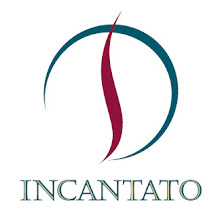 Dear members of the UGA Chamber Choir,
Dear members of the UGA Chamber Choir,As your departure for your 2011 performance tour comes closer and closer, Incantato Tours provides you with different travel tips to make it easier for you to get ready for your trip.
For most people, packing for a trip is the most difficult part. The solution for many is to just pack as much as you possibly can into your suitcase and backpack, but as a colleague explains it: "You'll be thanking me later when you don't break your back from having to carry everything on your own. Don't do it!" Her advice: "Pack as lightly as you can. The best way to get it all to fit nicely into your suitcase is to fold it nicely and then roll it tightly. It can all fit into your bag like a puzzle."
Here are a few things that we think are essential to have to be comfortable with what the weather brings and with the weight of your bag - remember, we allow only one checked bag per person and a small carry-on such as a bag pack or small duffel.
A sample packing list (just a suggestion!)
* Rain jacket, maybe with fleece insert
* Umbrella
* An adapter plug/converter (if bringing electronic devices)
* Camera and batteries or charger with adapter
* At least two pair of jeans/pants, ladies may want to bring a couple skirts or dresses too
* a sweater or two
* Plenty of shirts, including a polo or two and at least two dress shirts (Europeans dress much more formal than Americans)
* Plenty of undergarments and socks for daily changes
* A watch, make-up and jewelry if applicable (carry on any valuables)
* Choir music and attire
* Don't forget shoes, we recommend a maximum of three pairs (tennis shoes, good everyday shoes, dress shoes). Bring nice concert shoes, but make sure that you will be able to walk long distances in them. Europeans do not wear flip flops other than to the pool or at the beach.
* Put all liquids that are in your carry-on into a zip-lock bag. And remember the 311 rules.http://www.tsa.gov/311/
* All scissors, fingernail clippers, etc. are better packed in your check-in luggage along with liquids over 3 ounces. Bring enough contact lense solution and prescription medication that you may need for the whole duration of the trip.
If you forget anything there are plenty of shops where you can by shampoo, toothpaste, etc.













